hot air balloons
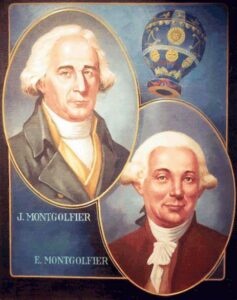 These days, we often see hot-air balloons flying over our cities in the summer. In fact, there are annual balloon festivals in many cities, and people turn out in droves to watch the colorful spectacle go up or fly over their houses. People will pay good money for a chance to take a ride in them…a chance to enjoy the freedom of floating on air for a little while and leaving all their cares far below on the ground.
These days, we often see hot-air balloons flying over our cities in the summer. In fact, there are annual balloon festivals in many cities, and people turn out in droves to watch the colorful spectacle go up or fly over their houses. People will pay good money for a chance to take a ride in them…a chance to enjoy the freedom of floating on air for a little while and leaving all their cares far below on the ground.
French physician Jean-François Pilatre de Rozier and François Laurent, the marquis d’ Arlandes, knew well, that desire. They made their dream of “floating on air” come true when, on November 21, 1783, they lifted of and almost silently floated over the city of Paris, France. Theirs was the first untethered hot-air balloon flight in history. They flew 5.5 miles over Paris in about 25 minutes. Their cloth balloon was crafted by French paper-making brothers Jacques-Étienne and Joseph-Michel Montgolfier, inventors of the world’s first successful hot-air balloons.
“Many inventors had tried to make a way to fly, building elaborate kins of wings and such, but nothing succeeded until the 1780s, that human flight became a reality. The first successful flying device may not have been a Montgolfier balloon but an “ornithopter,” a glider-like aircraft with flapping wings. According to a hazy record, the German architect Karl Friedrich Meerwein succeeded in lifting off the ground in an ornithopter in 1781. Whatever the veracity of this record, Meerwein’s flying machine never became a viable means of flight, and it was the Montgolfier brothers who first took men into the sky.” 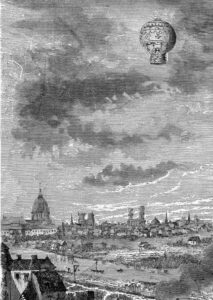
The Montgolfier brothers ran a prosperous paper business in the town of Vidalon in southern France. Because they were so successful, they had the money to finance their interest in scientific experimentation. They dabbled in several areas of experimentation, and in 1782, they discovered that combustible materials burned under a lightweight paper or fabric bag would cause the bag to rise into the air. The brothers thought it was the smoke that causes balloons to rise, when actually, it is hot air that causes balloons to rise. Nevertheless, the error in the mechanics of flight didn’t hamper their further achievements.
They gave their first public demonstration on June 4, 1783, in Annonay, sending an unmanned balloon heated by burning straw and wool, 3,000 feet into the air before it settled to the ground nearly two miles away. The brothers didn’t know that the first successful hot air balloon test had preceded theirs in 1709 and was carried out by Bartolomeu Lourenço de Gusmão, a Brazilian priest who launched a small hot-air balloon in the palace of the king of Portugal. Nevertheless, the brothers quickly outdid anything de Gusmão did.
The Montgolfiers sent a sheep, a rooster, and a duck aloft on September 19, in one of their balloons in a trial run, prior to the first manned flight. The balloon, painted azure blue and decorated with golden fleurs-de-lis, lifted up from the courtyard of the palace of Versailles in the presence of King Louis XVI. The experiment was successful, and the animals stayed afloat for eight minutes. Then, they landed safely two miles away. Finally, it 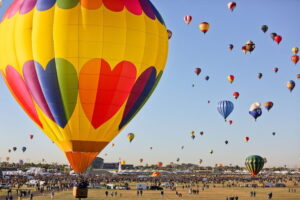 was time to try humans, so on October 15, Jean-François Pilátre de Rozier made a tethered test flight of a Montgolfier balloon. The balloon rose briefly before returning to earth. Then, finally, in a much-anticipated flight, the first untethered hot-air balloon flight occurred before a large, expectant crowd in Paris on November 21, 1783. Pilátre and d’Arlandes, an aristocrat, rose up from the grounds of royal Cháteau La Muette in the Bois de Boulogne and flew approximately five miles. Humanity had at last conquered the sky. For their achievement, the Montgolfier brothers were honored by the French Acadámie des Sciences. They went on to published books on aeronautics, and they also pursued important work in other scientific fields.
was time to try humans, so on October 15, Jean-François Pilátre de Rozier made a tethered test flight of a Montgolfier balloon. The balloon rose briefly before returning to earth. Then, finally, in a much-anticipated flight, the first untethered hot-air balloon flight occurred before a large, expectant crowd in Paris on November 21, 1783. Pilátre and d’Arlandes, an aristocrat, rose up from the grounds of royal Cháteau La Muette in the Bois de Boulogne and flew approximately five miles. Humanity had at last conquered the sky. For their achievement, the Montgolfier brothers were honored by the French Acadámie des Sciences. They went on to published books on aeronautics, and they also pursued important work in other scientific fields.
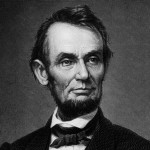 Hot air balloons have been around for a long time, and there have been multiple uses for them. Hot air balloons have been used for everything from travel, recreation, escape, war, and even spying. It was the latter reason that brought President Abraham Lincoln to a field outside Washington DC on October 4, 1861. Those were tumultuous years, with the Civil War in full swing, and both the Confederate and the Union armies were experimenting with the idea of using hot air balloons to gather military intelligence. It was probably a good idea, but there was enough danger involved with this idea, that it proved to be impractical in most situations.
Hot air balloons have been around for a long time, and there have been multiple uses for them. Hot air balloons have been used for everything from travel, recreation, escape, war, and even spying. It was the latter reason that brought President Abraham Lincoln to a field outside Washington DC on October 4, 1861. Those were tumultuous years, with the Civil War in full swing, and both the Confederate and the Union armies were experimenting with the idea of using hot air balloons to gather military intelligence. It was probably a good idea, but there was enough danger involved with this idea, that it proved to be impractical in most situations.
I don’t think most people who were presented with the idea of using hot air balloons in a war situation, were very sold on it. Several firms had been talking to the War Department about balloons, but Thaddeus SC Lowe, who had been working with hydrogen balloons for several 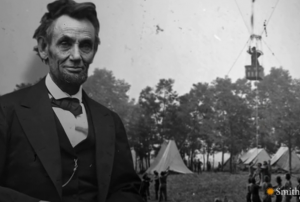 years, and was convinced that they could be a useful tool for collecting intelligence, was the primary figure in that quest. He had conducted trials in April 1861 near Cincinnati, Ohio, with the support of the Smithsonian Institution. On April 19, 1861, he took flight for a trip that would take him to Unionville, South Carolina, where he was immediately jailed by the Confederates, who were convinced that he was a Union spy.
years, and was convinced that they could be a useful tool for collecting intelligence, was the primary figure in that quest. He had conducted trials in April 1861 near Cincinnati, Ohio, with the support of the Smithsonian Institution. On April 19, 1861, he took flight for a trip that would take him to Unionville, South Carolina, where he was immediately jailed by the Confederates, who were convinced that he was a Union spy.
In the end, Lowe had it right. The hot air balloon could be instrumental in winning a war. He became the head of the Union’s Balloon Corpsin 1861 and served effectively during the Peninsular campaign of 1862. With the views provided from his balloon, Lowe discovered that the Confederates had evacuated Yorktown, Virginia, and 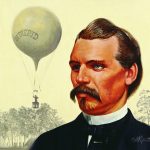 he provided important intelligence during the Battle of Fair Oaks, Virginia. He had a good working relationship with George McClellan, commander of the Army of the Potomac, but had difficulties with McClellan’s successors. Generals Ambrose Burnside and Joseph Hooker were sadly not convinced that balloon observations provided accurate information. I guess they just didn’t have the same vision as Lowe had. Lowe became increasingly frustrated with the army, particularly after his pay was slashed in 1863. Feeling that army commanders did not take his service seriously, Lowe resigned in the spring of 1863. The Balloon Corps was disbanded in August of that year. Lowe later became involved in building a railway in California. He died there in 1913 at age 80.
he provided important intelligence during the Battle of Fair Oaks, Virginia. He had a good working relationship with George McClellan, commander of the Army of the Potomac, but had difficulties with McClellan’s successors. Generals Ambrose Burnside and Joseph Hooker were sadly not convinced that balloon observations provided accurate information. I guess they just didn’t have the same vision as Lowe had. Lowe became increasingly frustrated with the army, particularly after his pay was slashed in 1863. Feeling that army commanders did not take his service seriously, Lowe resigned in the spring of 1863. The Balloon Corps was disbanded in August of that year. Lowe later became involved in building a railway in California. He died there in 1913 at age 80.

